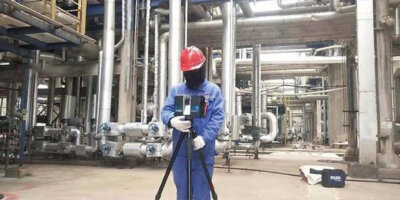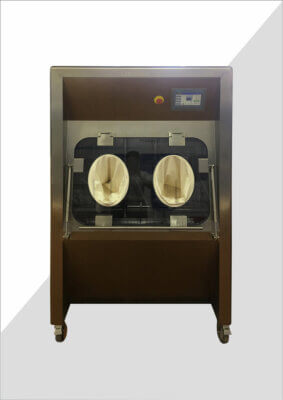In the complex world of vaccine production, maintaining stringent safety standards is paramount. One critical component in this process is the Effluent Decontamination System (EDS), which plays a vital role in ensuring the safe handling and disposal of potentially hazardous materials. As vaccine production facilities strive to meet increasingly rigorous regulatory requirements, the implementation of advanced EDS solutions has become more crucial than ever.
The use of EDS in vaccine production facilities addresses multiple challenges, including the management of biological waste, prevention of environmental contamination, and compliance with biosafety regulations. These systems are designed to treat liquid waste generated during the vaccine manufacturing process, rendering it safe for disposal or further processing. By effectively neutralizing pathogens and other potentially harmful substances, EDS contributes significantly to the overall safety and efficiency of vaccine production operations.
As we delve deeper into the applications of EDS in vaccine production facilities, we'll explore the various aspects of these systems, their implementation, and the benefits they offer to the pharmaceutical industry. From the intricacies of system design to the latest technological advancements, this article will provide a comprehensive overview of how EDS is revolutionizing safety protocols in vaccine manufacturing.
"Effluent Decontamination Systems are an indispensable component of modern vaccine production facilities, ensuring the safe treatment of liquid waste and maintaining the highest standards of biosafety."
| EDS Component | Function | Importance in Vaccine Production |
|---|---|---|
| Thermal Treatment | Heat inactivation of pathogens | Critical for neutralizing live viruses |
| Chemical Treatment | Disinfection using chemicals | Ensures complete decontamination |
| Filtration Systems | Removal of particulates | Prevents release of harmful substances |
| Monitoring Equipment | Real-time process control | Guarantees consistent treatment efficacy |
| Containment Systems | Prevents leaks and spills | Maintains facility biosafety levels |
How does EDS contribute to biosafety in vaccine production?
The implementation of Effluent Decontamination Systems in vaccine production facilities is a cornerstone of biosafety protocols. These systems are designed to handle the complex and potentially hazardous waste streams generated during the vaccine manufacturing process.
EDS plays a crucial role in maintaining the integrity of biosafety levels (BSL) within production facilities. By effectively treating liquid waste before it leaves the controlled environment, these systems prevent the release of potentially infectious agents into the wider environment.
The 'QUALIA Effluent Decontamination System (EDS) for BSL-2, 3, and 4 Liquid Waste' exemplifies the cutting-edge technology employed in modern vaccine production facilities. This system is specifically designed to handle the rigorous demands of high-level biosafety environments, ensuring that all effluents are thoroughly decontaminated before disposal.
"EDS systems in vaccine production facilities are engineered to meet or exceed the stringent requirements set by regulatory bodies, providing a robust barrier against potential biohazards."
| BSL Level | EDS Requirements | Typical Vaccine Types |
|---|---|---|
| BSL-2 | Basic decontamination | Influenza, MMR |
| BSL-3 | Advanced treatment | TB, SARS |
| BSL-4 | Highest level of containment | Ebola, Marburg virus |
What are the key components of an EDS in vaccine facilities?
An effective Effluent Decontamination System in a vaccine production facility comprises several critical components, each playing a specific role in the treatment process. The primary elements typically include thermal treatment units, chemical dosing systems, filtration mechanisms, and advanced monitoring equipment.
The thermal treatment unit is often the first line of defense, using high temperatures to inactivate pathogens. This is followed by chemical treatment, which may involve the use of oxidizing agents or other disinfectants to ensure complete decontamination. Filtration systems then remove any remaining particulates or inactivated microorganisms.
Advanced monitoring and control systems are integral to the operation of modern EDS installations. These systems provide real-time data on various parameters such as temperature, pH, and chemical concentrations, ensuring that the treatment process remains within specified limits at all times.
"The integration of multiple treatment modalities within a single EDS ensures a comprehensive approach to effluent decontamination, addressing a wide range of potential biological hazards encountered in vaccine production."
| Component | Function | Benefit |
|---|---|---|
| Thermal Unit | Heat inactivation | Rapid pathogen neutralization |
| Chemical Dosing | Disinfection | Broad-spectrum effectiveness |
| Filtration | Particle removal | Enhanced effluent purity |
| Monitoring System | Process control | Consistent treatment quality |
How does EDS integrate with overall facility design?
The integration of Effluent Decontamination Systems into the overall design of vaccine production facilities is a complex process that requires careful planning and coordination. EDS must be seamlessly incorporated into the facility's infrastructure, taking into account factors such as process flow, containment requirements, and regulatory compliance.
In modern vaccine production facilities, EDS is typically designed as a centralized system that collects and treats effluents from various production areas. This centralized approach allows for more efficient management of waste streams and ensures consistent treatment across all sources of liquid waste within the facility.
The physical layout of the EDS installation must be carefully considered to maintain the integrity of containment zones within the facility. This often involves the use of dedicated piping systems, barrier technologies, and airlock systems to prevent cross-contamination between different biosafety levels.
"The successful integration of EDS into vaccine production facilities demands a holistic approach to facility design, ensuring that biosafety considerations are addressed at every stage of the production process."
| Design Aspect | Consideration | Impact on EDS Integration |
|---|---|---|
| Facility Layout | Contamination control | Influences EDS placement |
| Process Flow | Waste stream management | Determines EDS capacity |
| Containment Zones | Biosafety level requirements | Affects EDS specifications |
| Regulatory Compliance | GMP standards | Guides EDS design features |
What challenges are associated with EDS implementation in vaccine facilities?
Implementing Effluent Decontamination Systems in vaccine production facilities presents several challenges that must be carefully addressed to ensure optimal performance and compliance with regulatory standards. One of the primary challenges is the variability in waste streams generated during different stages of vaccine production.
Vaccine manufacturing processes can produce effluents with diverse characteristics, including varying pH levels, organic loads, and types of biological agents. This diversity necessitates the design of flexible EDS solutions capable of adapting to different treatment requirements.
Another significant challenge is the need for continuous operation and reliability. Vaccine production often involves continuous processes, and any downtime in the EDS could potentially disrupt production or compromise biosafety. Therefore, redundancy and robust maintenance protocols are essential considerations in EDS implementation.
"The complexity of vaccine production processes demands EDS solutions that are not only highly effective but also adaptable and resilient, capable of handling a wide range of effluent characteristics while maintaining uninterrupted operation."
| Challenge | Impact | Mitigation Strategy |
|---|---|---|
| Waste Stream Variability | Treatment efficacy | Flexible, multi-stage systems |
| Continuous Operation | System reliability | Redundant components, preventive maintenance |
| Regulatory Compliance | Design complexity | Regular audits, documentation |
| Space Constraints | System integration | Compact, modular designs |
How does EDS technology contribute to sustainable vaccine production?
The implementation of advanced Effluent Decontamination Systems in vaccine production facilities not only enhances safety but also contributes significantly to sustainability efforts within the pharmaceutical industry. Modern EDS technologies are designed with environmental considerations in mind, aiming to minimize resource consumption and reduce the overall environmental footprint of vaccine manufacturing processes.
One key aspect of sustainability in EDS is the optimization of water usage. Advanced systems often incorporate water recycling capabilities, allowing treated effluents to be reused in non-critical processes within the facility. This not only reduces water consumption but also minimizes the volume of waste requiring final disposal.
Energy efficiency is another important consideration in sustainable EDS design. The latest technologies employ heat recovery systems and energy-efficient components to reduce the overall energy consumption of the treatment process. Additionally, the use of advanced control systems allows for precise management of treatment parameters, further optimizing energy use.
"By incorporating sustainable design principles, modern EDS technologies not only ensure biosafety but also contribute to the overall environmental responsibility of vaccine production facilities, aligning with global sustainability goals."
| Sustainability Aspect | EDS Contribution | Environmental Benefit |
|---|---|---|
| Water Conservation | Effluent recycling | Reduced freshwater demand |
| Energy Efficiency | Heat recovery systems | Lower carbon footprint |
| Chemical Use Optimization | Advanced dosing control | Minimized environmental impact |
| Waste Reduction | Improved treatment efficacy | Decreased disposal requirements |
What future developments can we expect in EDS for vaccine production?
The field of Effluent Decontamination Systems for vaccine production is continuously evolving, driven by advancements in technology and changing regulatory landscapes. Future developments in EDS are likely to focus on enhancing treatment efficacy, improving system intelligence, and further integrating sustainability features.
One anticipated trend is the increased use of advanced oxidation processes (AOPs) in EDS. These technologies, which include UV-based systems and catalytic processes, offer the potential for more efficient and environmentally friendly treatment of complex pharmaceutical effluents.
Another area of development is the integration of artificial intelligence and machine learning into EDS control systems. These technologies could enable predictive maintenance, optimize treatment processes in real-time, and provide deeper insights into system performance and waste stream characteristics.
"The future of EDS in vaccine production facilities lies in smarter, more efficient systems that not only meet current biosafety standards but also anticipate and adapt to evolving challenges in pharmaceutical manufacturing."
| Future Technology | Potential Application | Expected Benefit |
|---|---|---|
| Advanced Oxidation | Enhanced treatment | Improved efficacy against resistant pathogens |
| AI-driven Control | Predictive maintenance | Increased system reliability |
| Nanotechnology | Targeted contaminant removal | Higher purity of treated effluents |
| Modular Systems | Flexible facility design | Adaptability to changing production needs |
How do regulatory standards influence EDS design in vaccine facilities?
Regulatory standards play a pivotal role in shaping the design and implementation of Effluent Decontamination Systems in vaccine production facilities. These standards, set by organizations such as the FDA, EMA, and WHO, establish the minimum requirements for biosafety and environmental protection in pharmaceutical manufacturing.
EDS designs must comply with Good Manufacturing Practice (GMP) guidelines, which outline specific requirements for the treatment and disposal of pharmaceutical waste. These guidelines influence various aspects of EDS design, from the selection of materials and components to the implementation of validation and monitoring protocols.
Regulatory standards also dictate the level of documentation and traceability required for EDS operations. This includes maintaining detailed records of system performance, treatment efficacy, and any deviations from standard operating procedures. Such documentation is crucial for regulatory inspections and ensuring ongoing compliance.
"The stringent regulatory environment in vaccine production necessitates EDS designs that not only meet current standards but are also flexible enough to adapt to evolving regulatory requirements, ensuring long-term compliance and operational efficiency."
| Regulatory Aspect | Impact on EDS Design | Compliance Measure |
|---|---|---|
| GMP Guidelines | Material selection | Use of pharma-grade components |
| Validation Requirements | System testing | Rigorous performance qualification |
| Documentation Standards | Record-keeping | Automated data logging systems |
| Environmental Regulations | Discharge limits | Advanced treatment technologies |
Conclusion
Effluent Decontamination Systems play a critical role in ensuring the safety and sustainability of vaccine production facilities. As we have explored, these systems are integral to maintaining biosafety levels, managing complex waste streams, and complying with stringent regulatory standards. The implementation of EDS technologies not only addresses immediate safety concerns but also contributes to the overall efficiency and environmental responsibility of pharmaceutical manufacturing processes.
The future of EDS in vaccine production looks promising, with ongoing developments in advanced treatment technologies, intelligent control systems, and sustainable design principles. As the pharmaceutical industry continues to evolve, EDS will remain at the forefront of efforts to enhance safety, improve efficiency, and minimize environmental impact in vaccine production.
By investing in state-of-the-art EDS solutions, such as those offered by 'QUALIA', vaccine manufacturers can ensure they are well-equipped to meet current and future challenges in pharmaceutical production. As we move forward, the continued advancement of EDS technologies will play a crucial role in supporting the development and production of safe, effective vaccines to address global health challenges.
External Resources
- Good Manufacturing Practices for Vaccine Production – WHO guidelines on GMP standards for vaccine production, including facility design and quality control measures.
- Principles of Veterinary Vaccine Production – OIE document outlining principles and requirements for vaccine production facilities.
- Vaccine Development, Testing, and Regulation – Overview of vaccine development process, including FDA's role in facility inspections.
- Current GMP Standards for the Production of Vaccines and Antibodies – Article discussing GMP standards in vaccine production, including environmental monitoring.
Related Contents:
- Navigating Regulatory Waters: Effluent Treatment in Biopharma
- Continuous Effluent Decontamination: Protecting Our Environment
- Effluent Decontamination Systems: Safeguarding Malaysia’s Environment
- Effluent Decontamination: Essential for High-Risk Labs
- Optimizing EDS for Cleanroom Efficiency
- Effluent Decontamination Systems: Safeguarding Pharmaceutical Waste Management
- Ensuring Compliance: Navigating Regulations for Effluent Decontamination
- Effluent Decontamination Systems for Biosafety Laboratories
- Thermal Effluent Decontamination: Protecting Our Environment





























